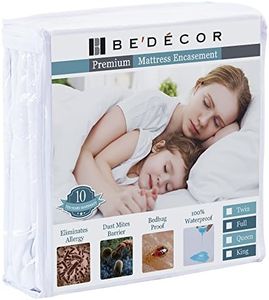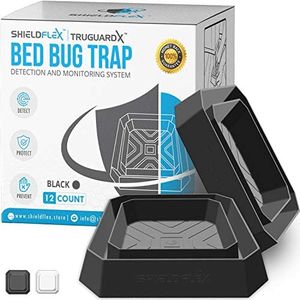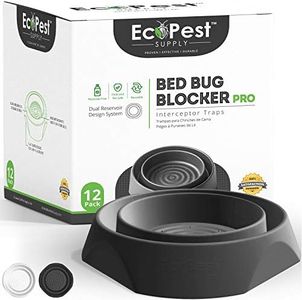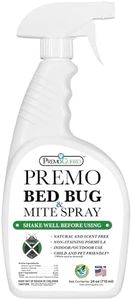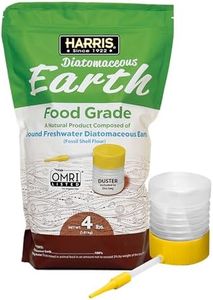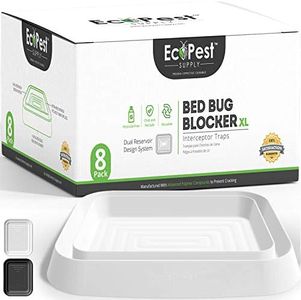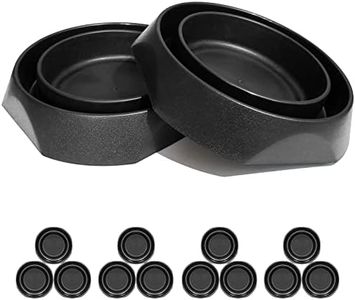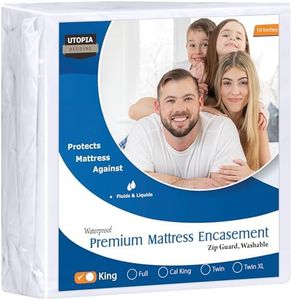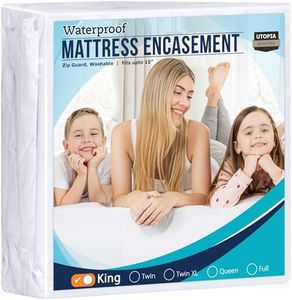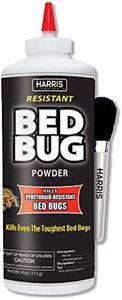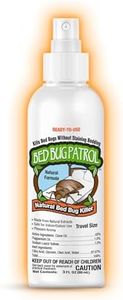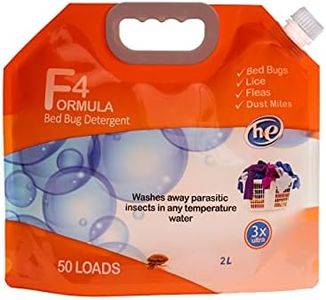We Use CookiesWe use cookies to enhance the security, performance,
functionality and for analytical and promotional activities. By continuing to browse this site you
are agreeing to our privacy policy
10 Best Bed Bug Killers
From leading brands and best sellers available on the web.Buying Guide for the Best Bed Bug Killers
Choosing the right bed bug killer can be challenging because there are many types of products available, each offering different modes of action and results. To pick an effective solution, it's important to consider how quickly you need results, whether you need it for immediate use or long-term prevention, and the nature of the environment (like if you have kids or pets at home). Understanding key features and what they mean for your needs will help you make a safer and more effective choice.Type of Bed Bug KillerBed bug killers come in several forms, such as sprays, powders (dusts), aerosols, liquids, and even heat-based solutions. Sprays and aerosols are great for direct, quick applications on mattresses and cracks, while powders can be used in areas where bugs might travel, like baseboards and behind furniture. Heat treatments, though less common for home use, can be effective but may require special equipment. Your choice should depend on where you plan to apply it—sprays for visible bugs and mattresses, powders for long-term protection in hidden areas, and heat for full-room treatment.
Active IngredientsThe active ingredient is the chemical or natural agent that kills or repels the bed bugs. Some common ones include pyrethroids, diatomaceous earth, and natural oils. Pyrethroids act fast and are common but bugs in some areas can be resistant. Diatomaceous earth is a natural, powdery substance that destroys bugs by drying them out—it’s slow but safe for humans and pets. Natural oils can be less effective for severe infestations but are generally safe. If you have sensitivities, pets, or kids, you might prefer natural or non-toxic options.
Residual EffectThis refers to how long the product continues to work after it's been applied. Some products act immediately but offer little long-term protection, while others continue to protect against re-infestation over days or weeks. If you’re dealing with an active infestation, immediate action might be a priority, but if you want ongoing control or live in an area with repeat problems, look for something that advertises a longer residual effect.
Ease of ApplicationEase of use covers how simply and safely you can apply the product. Sprays and aerosols are usually straightforward—you aim and spray. Powders require careful spreading and cleanup. Make sure you can apply the product safely, especially if you’re treating sensitive areas like a child’s bedroom, and check if protective gear is recommended.
Safety and OdorSafety is especially crucial if you have pets, kids, or health sensitivities. Some chemicals can leave strong odors or residues that require extra airing out, while natural products usually have milder scents and are less risky to those with sensitivities. Always check the safety instructions and preferred ventilation needs, especially for indoor treatments.
Speed of ActionSome products kill bed bugs almost instantly on contact, while others work over hours or days. If you need immediate relief—say, if you have guests coming or are reacting badly to bites—a fast-acting spray may help. Slow-acting products like powders are better for ongoing control or to use alongside other methods.
